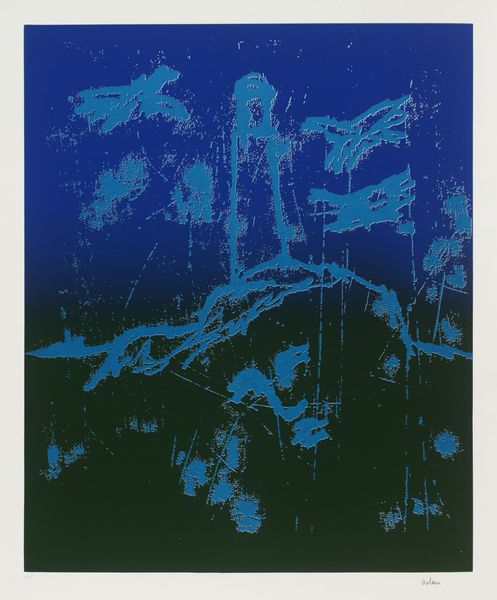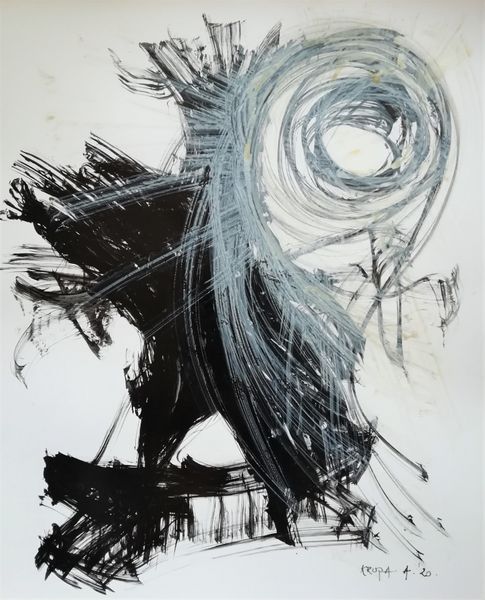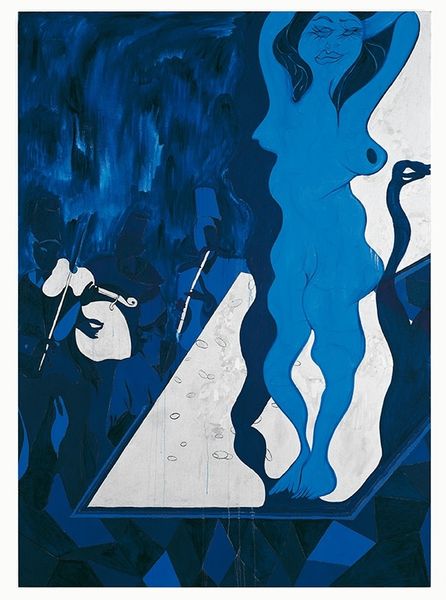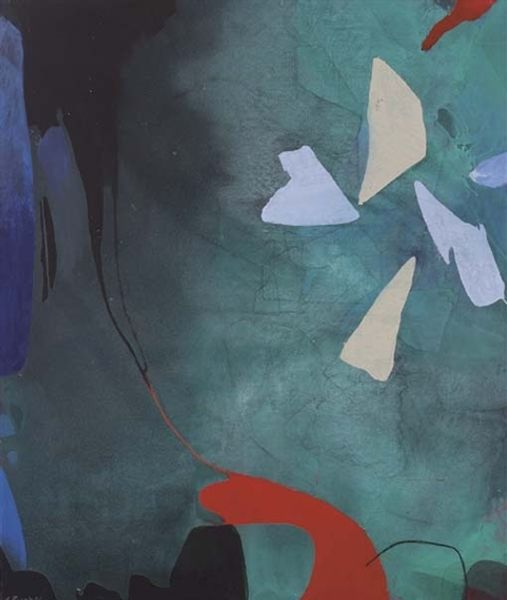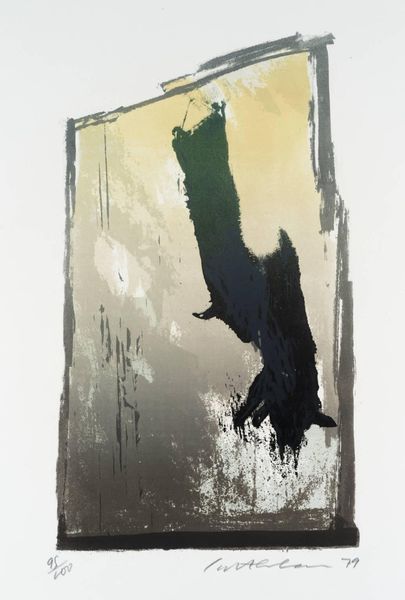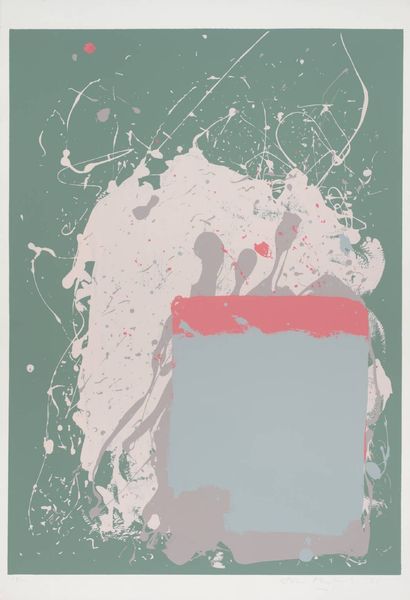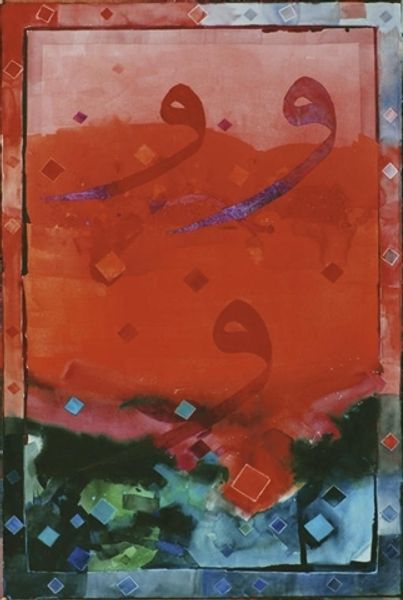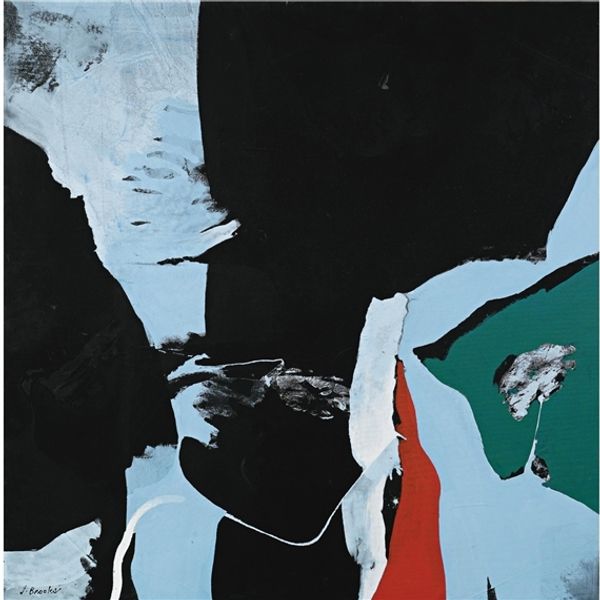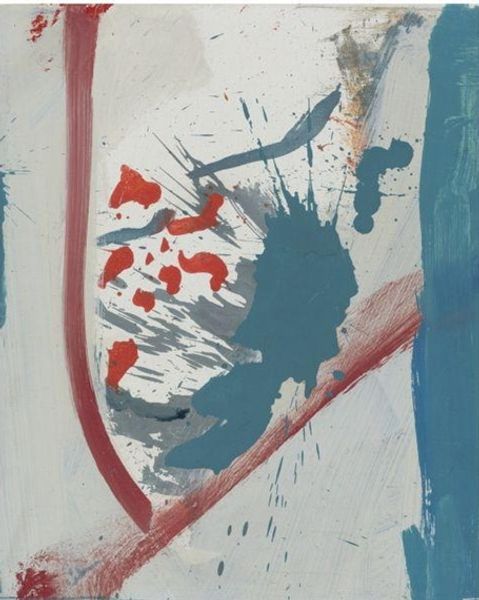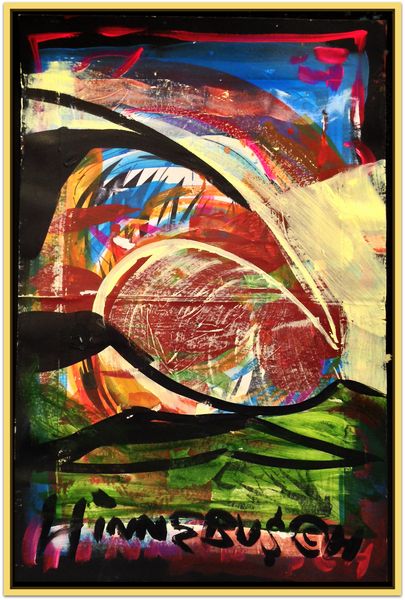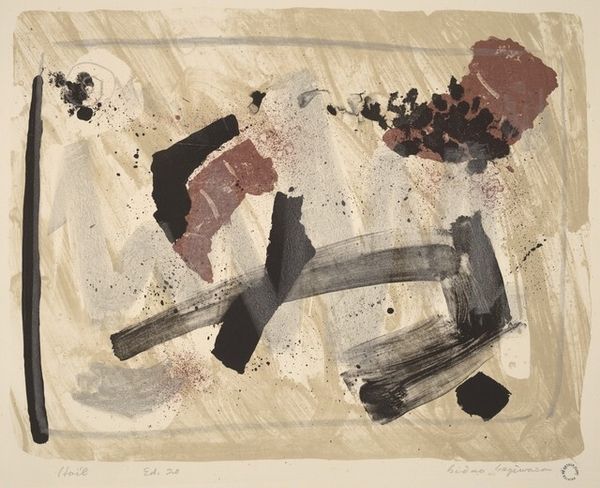
Dimensions: image: 48.5 x 37 cm (19 1/8 x 14 9/16 in.) sheet: 64.5 x 49.2 cm (25 3/8 x 19 3/8 in.)
Copyright: National Gallery of Art: CC0 1.0
Curator: This compelling abstract piece is titled "Mesto Andelu," or "Town of Angels," created by Joska Skalník in 1998. It appears to be a print utilizing watercolor techniques. What strikes you about it initially? Editor: It feels ethereal and slightly unsettling. The blues and teals give a sense of calm, but the geometric shapes layered with organic forms create an odd tension. It's not a peaceful angel town that's for sure. Curator: Skalník’s work often engages with themes of utopianism and the realities of social structure, or lack thereof. Abstraction in post-Soviet art serves as a complex mirror to those ideas, doesn't it? What do these floating geometrical structures suggest to you? Editor: The use of the grid inside the light blue rectangle in the middle distance, disrupted by these amorphous shapes reminds me of a city under construction – or perhaps a city crumbling, as the shapes are organic but menacing. And those colors, a muted palette referencing both sea and sky, gives off this melancholic sense. I mean, who are the angels in this town and where is the place to find some shelter? Curator: Indeed, the deconstruction of form could also echo the societal shifts happening in the late 90s in post-communist Eastern Europe, referencing disillusionment as much as aspiration. There are definite signs of Abstract Expressionism visible, which perhaps provides the painter with more range in what is normally quite a tight artistic practice. Editor: Absolutely. By disrupting any sense of easy harmony with conflicting symbolism – are those cloud formations along the top or the ground?- Skalník asks us to consider not just the visible surface, but the cultural and social narratives behind them, this search for security or a safe and reliable landscape. Curator: Looking at Skalník's "Town of Angels" through a critical, art-historical lens reveals the artist's engagement with the visual languages of both abstraction and social commentary. Editor: And for me, considering its historical moment makes it feel more like an investigation, in particular of fractured identity. Art is often more meaningful, politically and socially when the beauty has a question to ask about the structure of identity within society.
Comments
No comments
Be the first to comment and join the conversation on the ultimate creative platform.
